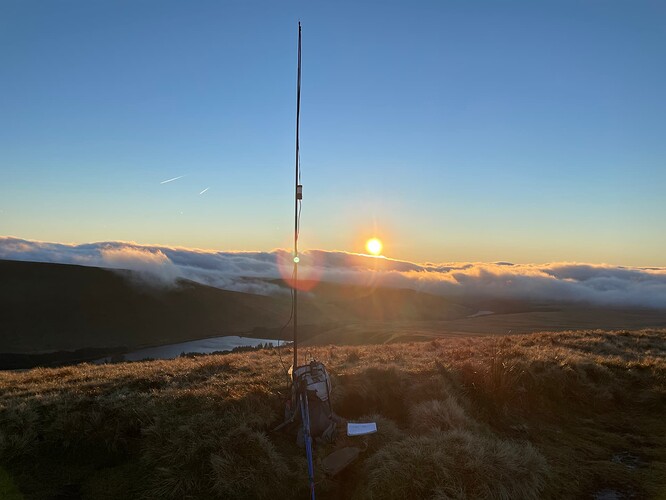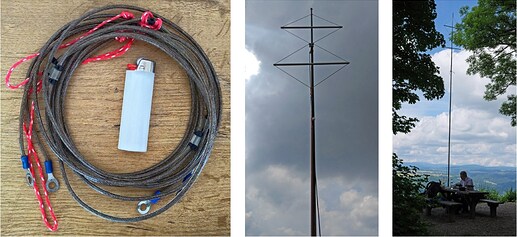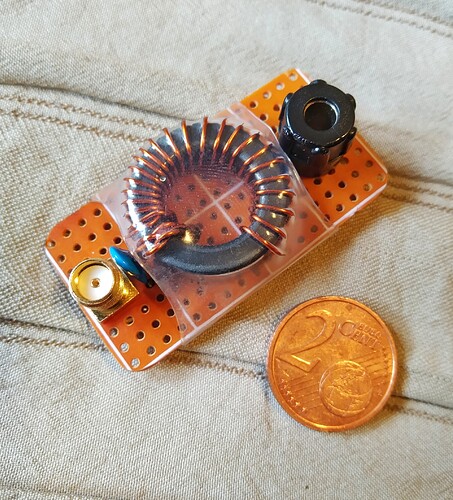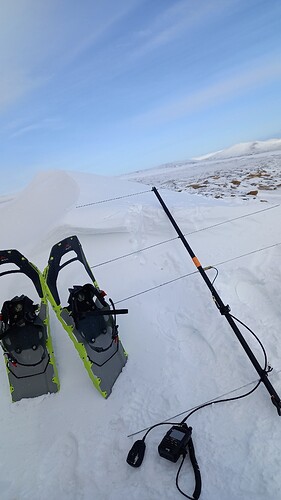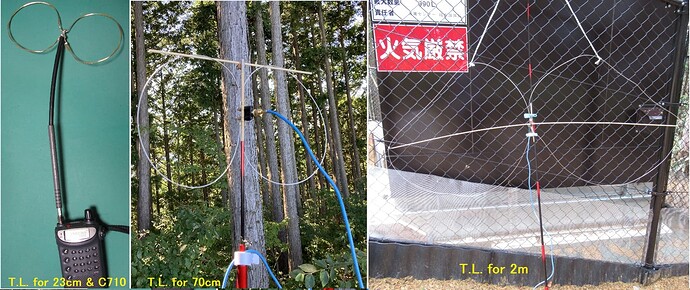Interesting thought. Honestly, I just avoided the counterpoise discussion with myself when setting this up. Ha. Now, whether I should have, that’s another question entirely  It’s a 10 foot run of RG-316, so not “too” short. I have the majority of it coiled in my pack out of the photo. You can see my “rig” photo in the “show us your rig” thread. Shots were from the same activation. I couldn’t go too long with the coax (attenuation concern) as i’m already only running QRP-ish power (10w with external battery). I could have used different coax, but i’m trying to trim weight and have a small footprint to the extent feasible. Appreciate the sentiment Eric. 73 - Mike
It’s a 10 foot run of RG-316, so not “too” short. I have the majority of it coiled in my pack out of the photo. You can see my “rig” photo in the “show us your rig” thread. Shots were from the same activation. I couldn’t go too long with the coax (attenuation concern) as i’m already only running QRP-ish power (10w with external battery). I could have used different coax, but i’m trying to trim weight and have a small footprint to the extent feasible. Appreciate the sentiment Eric. 73 - Mike
Agreed. I have a 3’ jumper in my kit that I use. That probably is too short. It gets out, but just about anything gets out and I’m certainly not going to tout anecdotal contacts as proof of this system’s efficacy as some do. I’ve taken to use a 20’ length but, as you say, that introduces a whole different attenuation problem.
73 Eric KG6MZ
Take a lok at Vers. (e)
73 Armin
My mast weighs 9 ounces and collapses to just 18 inches. A fishing tip-top is installed on top of the smallest section, then that section is hot-glued inside the next larger section stiffening it up to result in a 17 foot tall mast. The inverted-L forms a chord from the tip-top to the taped location about five feet up from the bottom of the mast. I leave several feet of the end of the EFHW dangling to become the feedline. No coax is used.
Antenna itself is #26 or #28 teflon coated stranded wire. The traps not only serve to multi-band the antenna, but also shorten the overall length from 67 feet for 40M to just 42 feet, making it much easier to deploy. antenna and winder weigh under three ounces. Using just three traps, this antenna is immediately resonant on 12M, 17M, 20M, 30M, and 40M. It is close to resonant and can be used on 10M and 15M. 60M can be achieved by skipping the 64:1 tunable balun and feeding it directly with the help of an ATU.
Here is a diagram of another antenna, a vertical beam called a Half-Square:
the wire is 67 feet long. It needs two points of support such that the horizontal leg is 34 feet long, and the two vertical legs are each 17 feet long. This antenna performs the same as a dipole on 40M. On 20M, the RF on the horizontal element cancels out. The two verticals have the current at the top which eliminates the need for radials. the stub dangling down in the middle allows for perfect resonance on 20M. It is bi-directional, broadside, at a very low angle of radiation, a superb DX antenna. It will also perform well on 15M with a cloverleaf pattern. Feed on the end with the same impedance transformer used with any end-fed halfwave. This antenna is a hybrid of the Bobtail which is twice as big.
73 Fred KT5X / WS0TA / W5YA
Beautiful Hentenna picture!
Yes, horizontal polarization is one of the advantages.
If the mast is not glass fiber rod but conductive carbon rod, it’s OK.
Vielen Dank! 73 JI1TLL Jun
Impressive Fred. Well thought out antenna system. …and thanks again for all your terrific guidance for my time in your beautiful state. Hope to catch up with you in person next time
73 Eric KG6MZS
I’ve been using this End-Fed with good results.
Yesterday I activated a summit in Western Pennsylvania. There were ALOT of trees so I just rolled the antenna out and hung it in a straight line over branches 6-7’ off the ground. I was able to reach German and French stations with @3W (20M CW) I use a 36” RG-316 feed-line.
On one night POTA last fall I worked 20ish stations and after wrapping up the activation I found the antenna had fallen on the ground! I can’t say how long it was in that position but I am sure at least a couple QSO were made with the on ground antenna.
Erik
KE8OKM
Hi Ben,
This is a very nice picture, capturing and radiating the mood quite well.  Am I right in assuming that you used a “flower pot” antenna?
Am I right in assuming that you used a “flower pot” antenna?
BR, Peter
Hi Peter,
Thanks for your kind words. I use a ‘slim-g’ when operating on 2m FM, which is the antenna in the image. It’s a similar design to the slim-j, but lighter weight and a great portable antenna for SOTA ![]()
Here’s a link to the antenna if you’d like more information - I definitely recommend after using many antennas on the mountains:
73, GW4BML. Ben
Hi Ben,
This is an intersting design I had not seen before. Thanks for the information. I have experimented with different 2 m FM antennas in the past. One lightweight and easy to deploy one was the flowerpot antenna I mentioned already. However, while looking for a more versatile solution I ended up with the SOTA double quad. Although predominantly horizontally polarized, covering reproducibly a range of >400 km in SSB from different summits, it performs surprisingly well also with FM. The range in FM is reduced to around 100 km, but this is in most cases sufficient to get hold of the local stations surrounding the summit [range values relate to 35 W power]. As regards susceptibility towards strong winds, I also find that the SOTA double quad can be operated on a fairly lightweight 5 m fishing pole. Currently, this is my preferred choice, balancing size, weight and efforts for employment.
It is and continues to be an intersting field for experiments.

Vy 73 de Peter, DO4TE
Hi Peter,
That’s very interesting. In Wales (GW) where I live, some 1 & 2 pointer summits are a good 2 miles if not more to reach the top, so I try and pack very light weight, especially in bonus season  so my current set up is the slim-g (in my image above) which stands on a 4m telescopic pole and runs into my small compact Yaesu FT-65e hand-held. It seems to get very good results having over 200kM distance contacts. I do like to experiment with different equipment, but for me at present, this setup works well.
so my current set up is the slim-g (in my image above) which stands on a 4m telescopic pole and runs into my small compact Yaesu FT-65e hand-held. It seems to get very good results having over 200kM distance contacts. I do like to experiment with different equipment, but for me at present, this setup works well.
73, GW4BML. Ben
This is impressive and I can understand that you will stay with it. Good luck with your future activations.
Vy 73 de Peter, DO4TE
Many thanks Peter. Let’s hope we can make a S2S in the future.
You take care and 73,
GW4BML. Ben
Beautiful antenna shot with Rising Sun, Ben.
I sometime use similar Slim Jim antenna. (Photo at JA6/FO-020)
300 ohm TV twin lead was light and adopted as radiator with matching stub.
Best 73, JI1TLL Jun
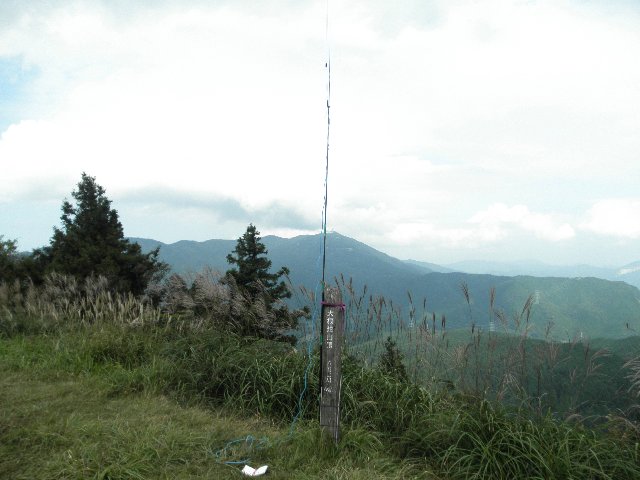
This one got me a qualification day in VHF No Man’s Land. So, it’s now my favourite!
2m 4 element beam. The elements pack inside the fibreglass pole.
Good design antenna, Peter.
Your double quad antenna is basically similar to my twin loop antenna.
According to the principal, front and back gain increase with the area inner the wire loop, circular loop is the best solution.
In that case, feeding impedance is 100 ohm approx., and the parallel connection allows direct feeding with 50 ohm cable like RG-58U.
After my good result on 23cm, this antenna is constantly employed on 70cm or 2m at summits.
All of them are designed for vertical polarization in Japan.
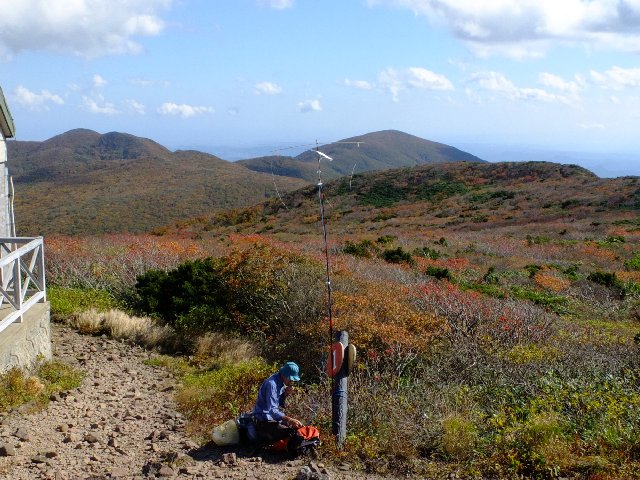
73, JI1TLL Jun
Dear Jun,
Thank you very much for coming back to me on the SOTA double quad. Well, I must admit that this is not my design and it has been published by several OMs in different places earlier. Not sure, who is the original “inventor”. Anyhow, you are right that the circle provides of course the highest area with a given circumference and that you are close to the optimum with your design.
I wish you many more successful activations with your antennas, BR Peter
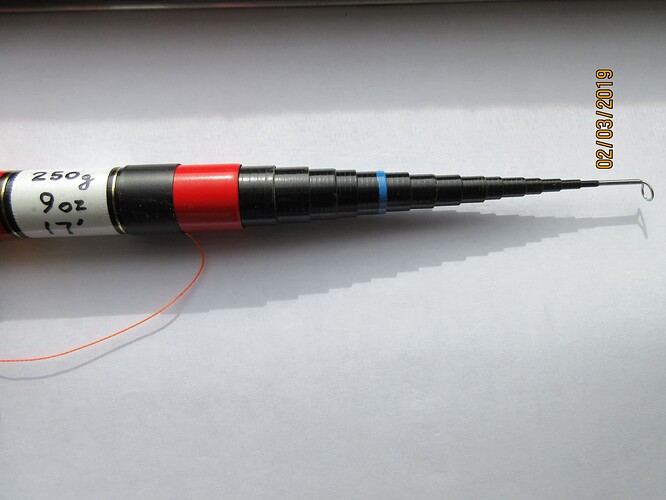
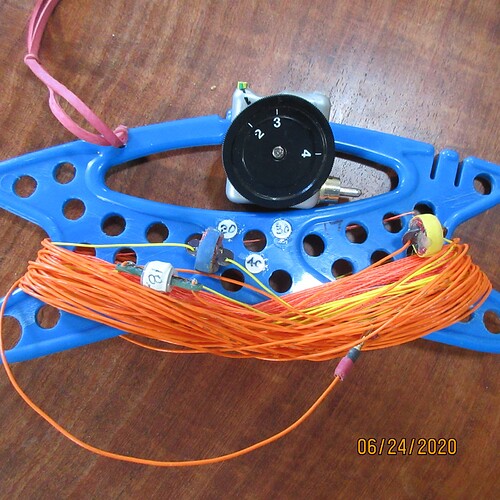
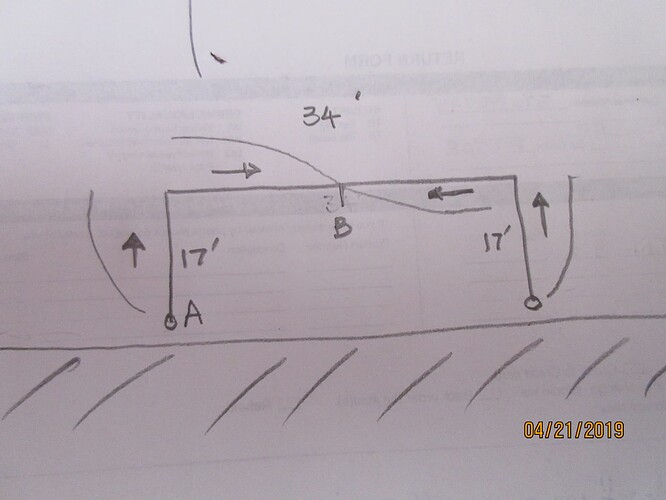
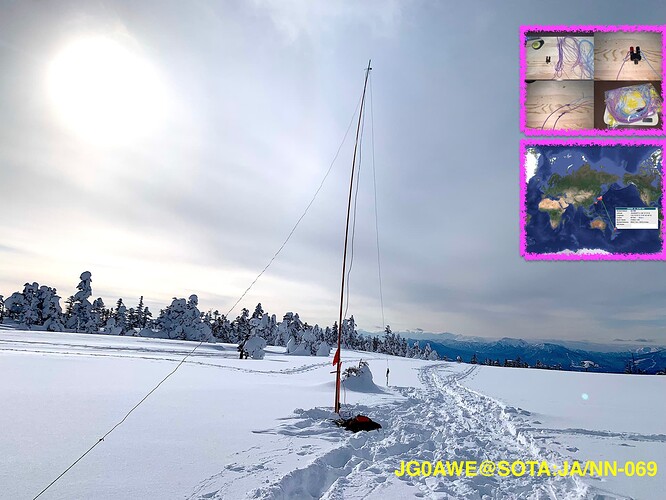
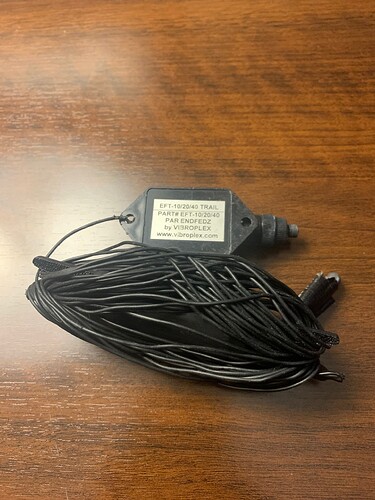
 GW/SW-005 Fan Fawr, operating on 2m FM.
GW/SW-005 Fan Fawr, operating on 2m FM.